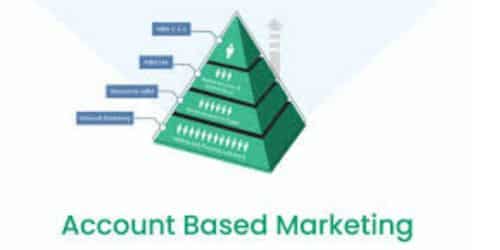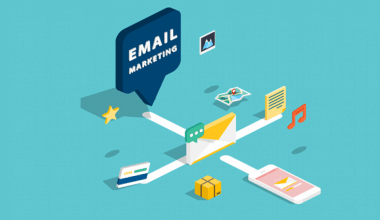Account-based marketing (ABM) is a marketing strategy that focuses on targeting a specific set of high-value accounts or customers with personalized, targeted messaging and content. Most often, business-to-business (B2B) marketing use account-based marketing to engage key decision-makers within a company or organization. The key difference between account-based marketing and traditional marketing is the focus on targeting specific accounts with personalized messaging and content, rather than targeting a broader audience with more generalized messaging. This allows businesses to focus their marketing efforts on the accounts that are most likely to generate the highest revenue and deliver the greatest ROI. Some companies that have successfully implemented account based marketing include Adobe, Salesforce, and Terminus. Let’s talk about what is account based marketing is as well as its framework.
What is an Account Based Marketing Strategy?
Account-based marketing (ABM) is a marketing strategy that focuses on targeting a specific set of high-value accounts or customers with personalized, targeted messaging and content. ABM is often used in business-to-business (B2B) marketing to engage key decision-makers within a company or organization. An effective account-based marketing strategy can help businesses to increase revenue and improve ROI by focusing their marketing efforts on the accounts that are most likely to generate the highest revenue and deliver the greatest value. By targeting key decision-makers within specific accounts with personalized messaging and content, businesses can increase their chances of success and build long-term, profitable relationships with their customers.
An effective account-based marketing strategy typically involves the following steps:
#1. Identify High-value Accounts
Always determine which accounts are the most valuable for your business. This will enable you to prioritize them based on their potential revenue or other factors.
#2. Research and Understand the Accounts
Gather data and insights on your target accounts, including their needs, pain points, and decision-making processes.
#3. Develop Personalized Messaging and Content
Create targeted messaging and content that speaks directly to the needs and pain points of your target accounts.
#4. Engage and Nurture the Accounts
Use targeted campaigns and personalized outreach to engage your target accounts and move them through the sales funnel.
#5. Measure and Optimize
Use data and analytics to measure the effectiveness of your ABM campaigns, and make adjustments as needed to improve results.
Account-Based Marketing Companies
There are many companies that specialize in account-based marketing (ABM) or offer ABM solutions as part of their marketing services. Some of the top ABM companies and solutions include:
#1. Terminus
A leading ABM platform that offers a range of tools and features for identifying and targeting key accounts, personalizing messaging and content, and measuring campaign performance.
#2. Demandbase
A comprehensive ABM solution that includes account identification, targeting and personalization, engagement and nurturing, analytics, and reporting.
#3. 6sense
An AI-powered ABM platform that uses predictive analytics and machine learning to identify and engage with the most relevant accounts and prospects.
#4. Engagio
A comprehensive ABM solution that includes account-based advertising, sales automation, analytics, and reporting.
#5. Triblio
An ABM platform that offers account-based advertising, web personalization, and sales activation tools to engage with target accounts across multiple channels.
Account-Based Marketing Framework
An effective ABM framework requires close collaboration between the marketing and sales teams, as well as a deep understanding of your target accounts and their needs. By focusing your marketing efforts on the accounts that are most likely to generate the highest revenue and deliver the greatest value, you can improve your ROI and build stronger, more profitable customer relationships.
An effective account-based marketing (ABM) framework typically involves the following steps:
#1. Define your target accounts
Determine which accounts or customer segments are the most valuable for your business and prioritize them based on factors such as revenue potential, strategic importance, or market share.
#2. Develop account-specific insights
Gather data and insights on your target accounts, including their needs, pain points, and decision-making processes. Use this information to create account-specific messaging and content that speaks directly to their needs and interests.
#3. Align your marketing and sales teams
Align your marketing and sales teams around your ABM strategy, and establish clear goals and objectives for each stage of the customer journey.
#4. Create personalized content and campaigns
Use account-specific insights to create targeted campaigns and personalized content that engages your target accounts and moves them through the sales funnel.
#5. Measure and optimize
Use data and analytics to measure the effectiveness of your ABM campaigns, and make adjustments as needed to improve results.
#6. Engage and nurture
Use a combination of targeted outreach, account-based advertising, and personalized content to engage your target accounts and build long-term, profitable relationships.
Account-Based Marketing vs Lead Generation
Account-based marketing (ABM) and lead generation are two different marketing strategies with different objectives and approaches. While both strategies are aimed at generating revenue and growing the customer base, ABM focuses on a smaller, more targeted group of high-value accounts, while lead generation aims to capture as many leads as possible, regardless of their value or likelihood to convert.
Lead generation is a strategy focused on attracting and capturing the contact information of potential customers who have shown interest in your product or service. The goal of lead generation is to generate a large number of leads that can be passed on to the sales team for follow-up and conversion. Lead generation is often associated with inbound marketing tactics such as content marketing, social media, and search engine optimization.
Account-based marketing, on the other hand, is a strategy focused on identifying and targeting high-value accounts or customer segments with personalized, targeted marketing and sales activities. The goal of ABM is to create a deeper and more meaningful relationship with target accounts and drive higher-value sales. ABM is often associated with outbound marketing tactics such as account-based advertising, personalized messaging and content, and targeted outreach.
What Are the Types of Account-Based Marketing?
There are three main types of account-based marketing (ABM): strategic ABM, ABM line, and programmatic ABM.
#1. Strategic ABM
This is the most targeted and personalized form of ABM, where marketing and sales teams work closely to identify a small number of high-value accounts and create customized marketing and sales plans for each account. This approach requires a significant investment of time and resources but can lead to high-value, long-term customer relationships.
#2. ABM Lite
This approach involves targeting a larger group of accounts with personalized messaging and content but without the same level of customization as strategic ABM. ABM Lite is often used for mid-sized accounts that have the potential for high revenue but do not require the same level of personalization as strategic ABM.
#3. Programmatic ABM
This approach uses technology and data to deliver targeted ads and content to specific accounts without the same level of customization as strategic or ABM Lite. Programmatic ABM is often used for larger, less-targeted account lists and can be an effective way to generate leads and drive revenue.
What Is the Difference Between Marketing and Account Based Marketing?
Traditional marketing focuses on creating general campaigns and messages that are intended to reach a large audience of potential customers, while account-based marketing (ABM) is a more targeted approach that is focused on a specific set of high-value accounts.
In ABM, marketing and sales teams work together to identify and prioritize the accounts that are most likely to generate significant revenue or strategic value. Instead of creating a broad-based marketing campaign that targets a wide range of potential customers, ABM aims to create highly personalized messages and content that are specifically tailored to the needs and interests of each target account.
Another key difference between marketing and ABM is the way in which success is measured. Traditional marketing campaigns may focus on metrics such as the number of leads generated, website traffic, or social media engagement. In contrast, ABM is more focused on specific outcomes related to the target accounts, such as the number of opportunities generated, the size of the deal, or the customer’s lifetime value.
What Are the Principles of Account-Based Marketing?
Generally, here are several principles that underlie effective account-based marketing (ABM). The following are some of these principles:
- Alignment between sales and marketing teams
- Focus on high-value accounts
- Personalization
- Multi-channel approach
- Measurement and analysis
- Continuous improvement
What Is Another Name for Account Based Marketing?
Another name for account-based marketing (ABM) is “key account marketing.”
What Is the Goal of ABM Strategy?
The goal of the account-based marketing (ABM) strategy is to focus on a specific set of high-value accounts and create personalized marketing campaigns tailored to the needs and interests of each account. The aim is to build stronger relationships with key accounts, increase engagement, and ultimately drive revenue growth. By aligning sales and marketing teams around a set of target accounts and using a multi-channel approach to engage them, organizations can create more impactful and efficient marketing campaigns that deliver better results.
Is Account Based Marketing Hard?
Not entirely, but it can be challenging. Like any marketing strategy, account-based marketing (ABM) can be challenging to implement effectively. It requires a significant investment of time and resources, and it requires close collaboration between the sales and marketing teams. However, with the right planning and execution, ABM can be a highly effective way to build stronger relationships with high-value accounts and drive revenue growth. The key is to focus on the right accounts, create highly personalized messaging and content, and use a multi-channel approach to engage target accounts across multiple touchpoints. While there may be some initial challenges in implementing ABM, organizations that are committed to this approach can achieve significant benefits over the long term.
Why Account Based Marketing is Better?
The following are some of the reasons why account based marketing is better:
- Focus on high-value accounts
- Personalized approach
- Stronger relationships
- Better alignment between sales and marketing
- More efficient use of resources
- OUTSOURCED CHIEF INVESTMENT OFFICER: Models, Services & Firms
- CRM MARKETING: What Is It, Examples & Strategy
- ACCOUNT BASED MARKETING: Definition, Strategies, Softwares, Examples & B2B
- HOW TO BECOME A BILLIONAIRE: Everything You Need To Know
- 11 BEST BUSINESS TEXT MESSAGING SERVICE & REVIEWS






